NCERT Solutions for Class 9 History Chapter 5 – Pastoralists in the Modern World
NCERT Solutions for Class 9 History Chapter 5 – Pastoralists in the Modern World are essential for understanding changes in traditional economies in the CBSE curriculum. These well-structured answers help students grasp topics like the life of pastoral communities, colonial restrictions, and adaptations in different regions. Designed as per the latest syllabus, these solutions strengthen conceptual clarity and improve exam preparation. Ideal for revision and practice, they highlight socio-economic transitions and historical continuity, making them a valuable study tool for scoring well in Class 9 Social Science exams.
NCERT Solutions For Class 9 History – Pastoralists in the Modern World – Exercise Images
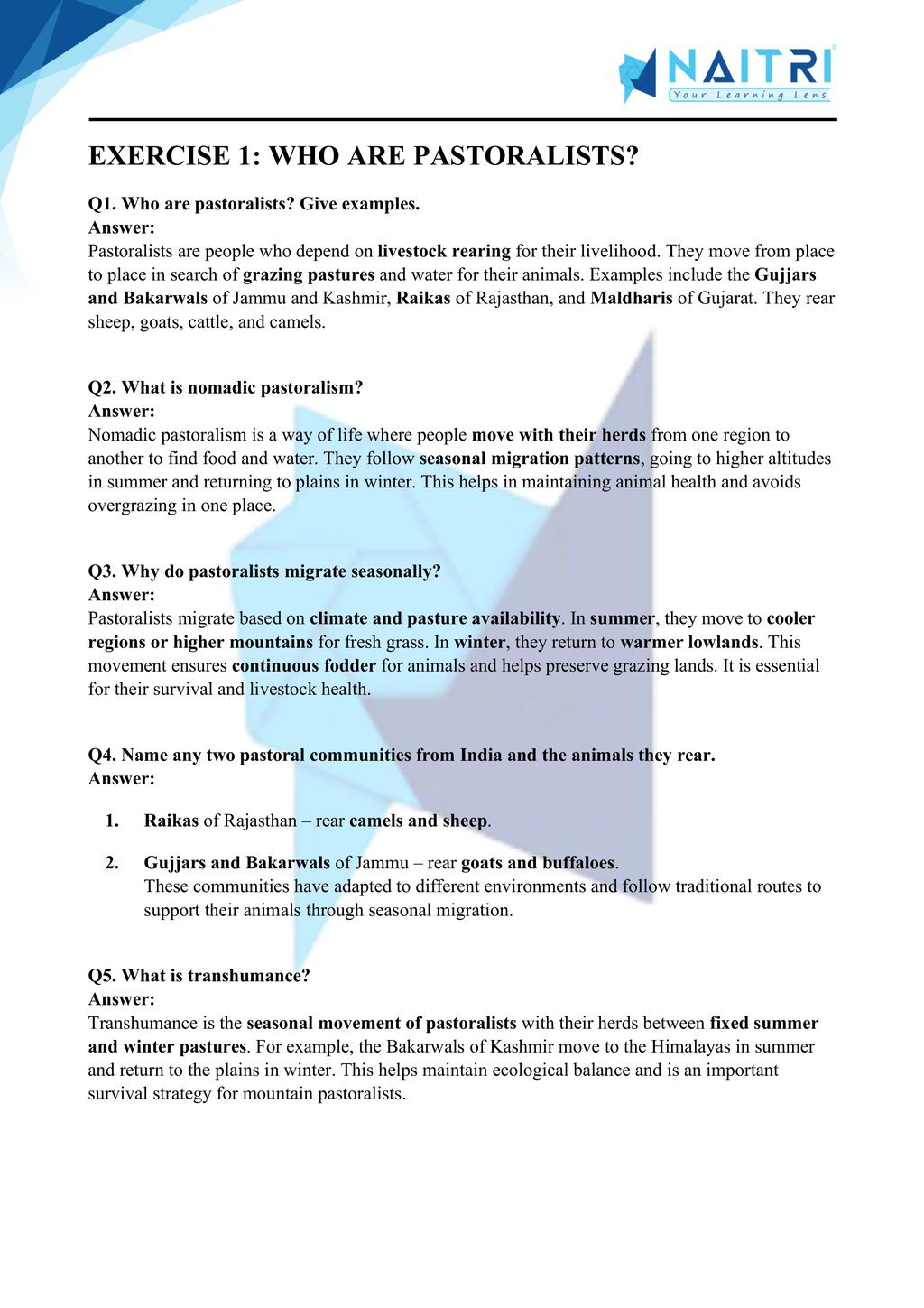
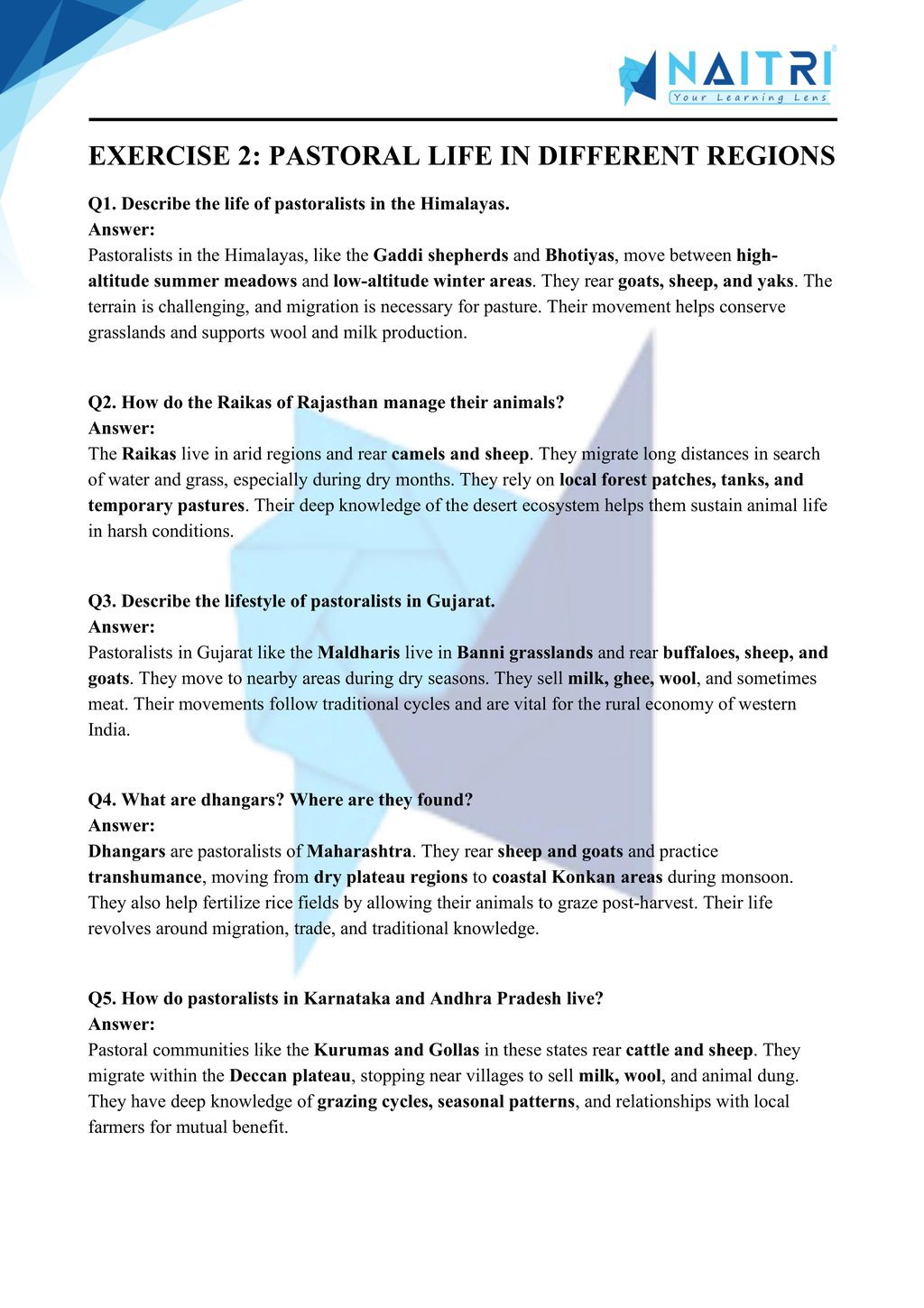
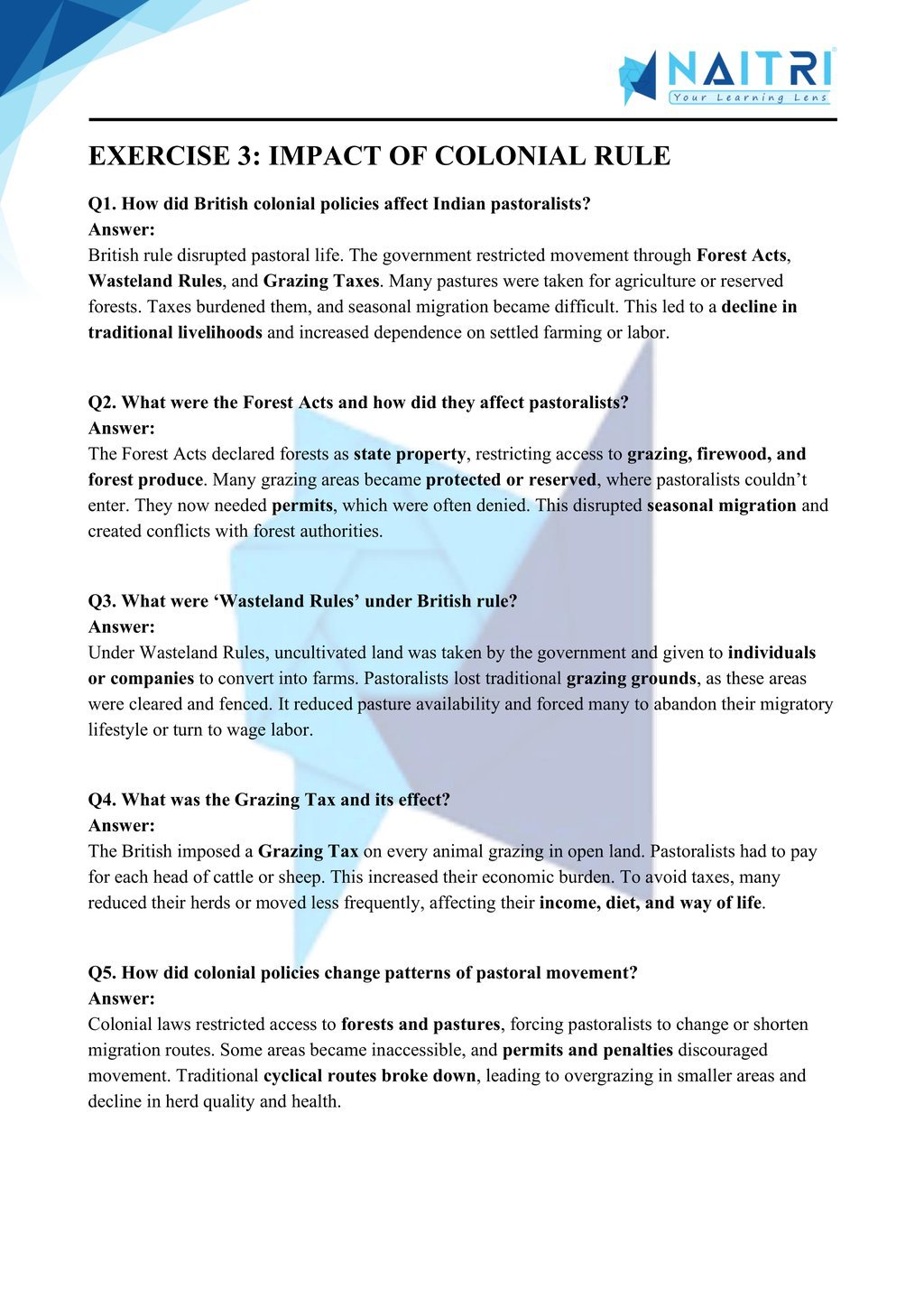
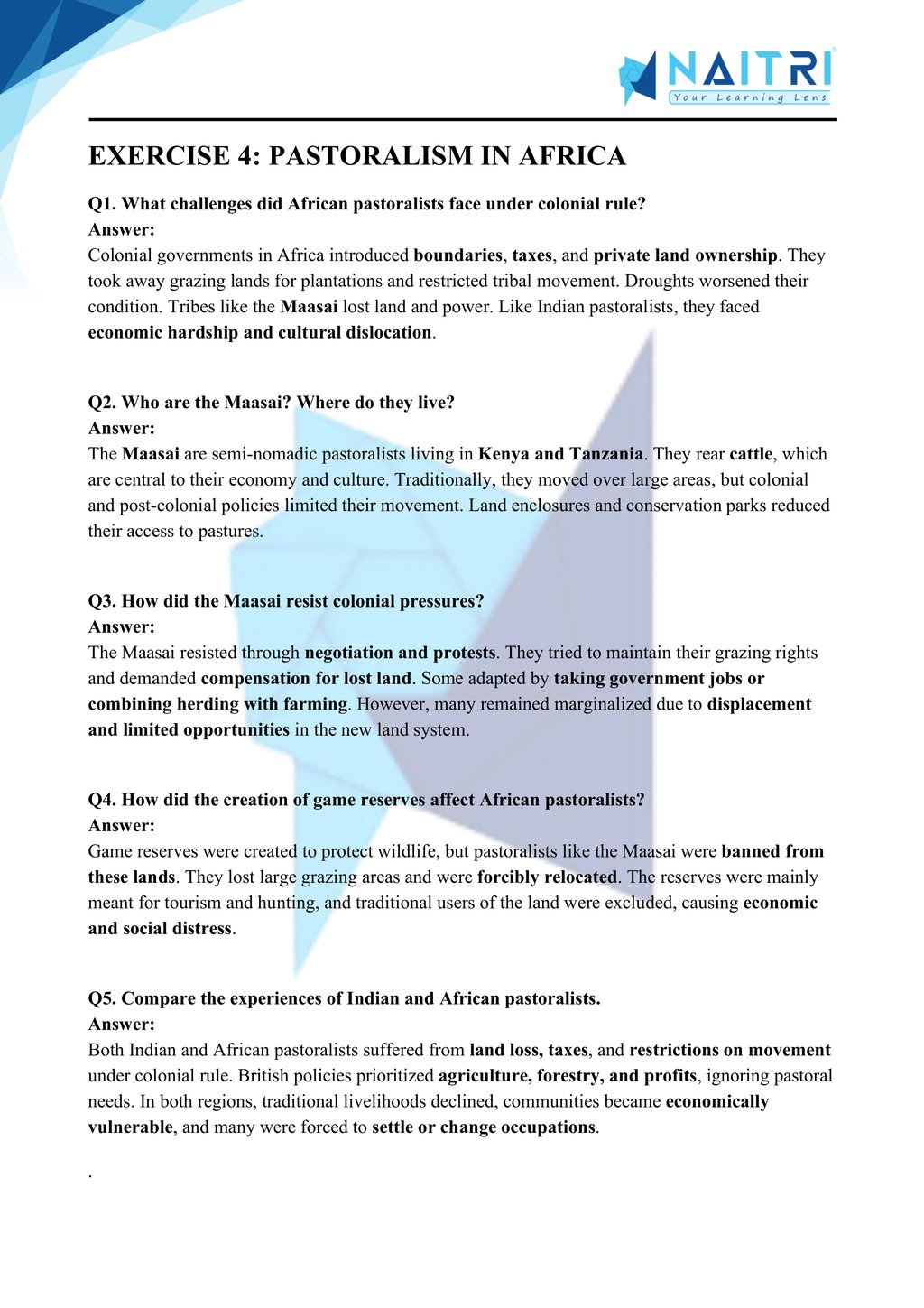
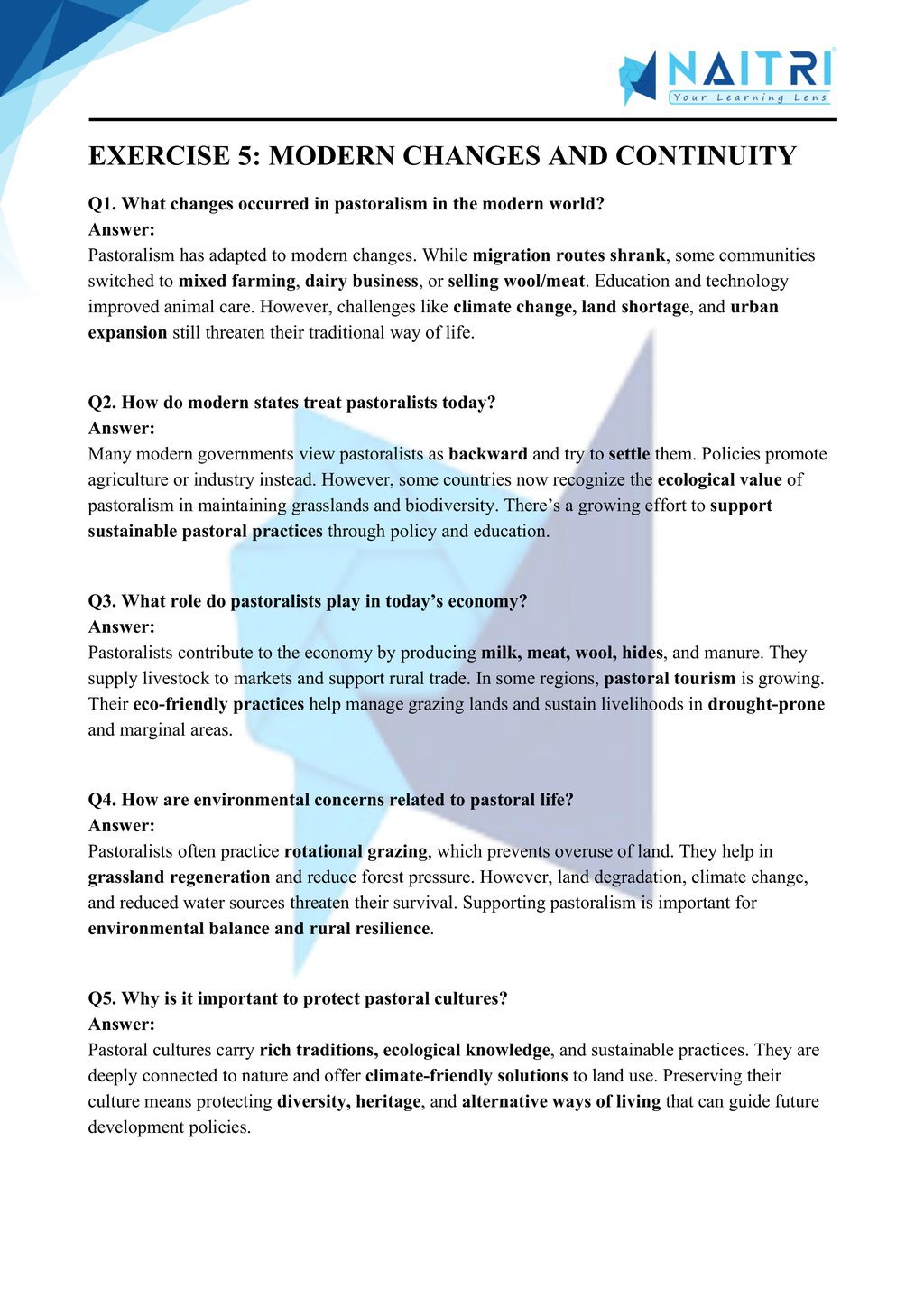
Experience Science Like Never Before – With AR!
Understanding Pastoralists in the Modern World is now more exciting and immersive! With the NAITRI App, you can explore complex history concepts through Augmented Reality (AR). See nomadic lives move, grazing lands change, and colonial policies impact communities — right in front of you. Our AR-powered lessons make learning interactive, 3D, and fun, helping you retain concepts better and enjoy every topic.



Visualize . Interact . Understand . The future of learning is here
Pastoralists in the Modern World – Important Questions with Answers
Who are pastoralists?
Answer: Pastoralists are communities who depend on domesticated animals for livelihood. They move seasonally in search of pasture and water for their herds.What is nomadic pastoralism?
Answer: Nomadic pastoralism is a way of life where people migrate periodically with their livestock to access fresh grazing land and maintain their traditional economy.Why do pastoralists move from one place to another?
Answer: They migrate due to seasonal climate changes, lack of pasture, and to avoid overgrazing. This ensures sustainable livestock health and better resource use.Name two pastoralist communities of India.
Answer: The Gujjars of Jammu and the Gaddis of Himachal Pradesh are examples. Both communities migrate with their cattle and sheep for seasonal grazing.How do pastoralists contribute to the economy?
Answer: They supply milk, wool, hides, and meat. Their animals are used for transport and agriculture, and their trade links connect remote rural regions.How did colonialism affect Indian pastoralists?
Answer: British policies restricted their movement, seized grazing lands, imposed taxes, and forced them to settle, disrupting their traditional lifestyle and economic independence.What were the Waste Land Rules?
Answer: Introduced by the British, these rules allowed uncultivated lands to be taken over for agriculture or plantations, denying pastoralists access to grazing grounds.How did Forest Acts affect pastoralists?
Answer: Forest Acts restricted access to forest lands. Grazing, wood collection, and water access were curtailed, severely impacting pastoral livelihoods and seasonal migrations.What were Criminal Tribes Acts?
Answer: These acts labeled certain nomadic communities as ‘criminal’ by birth, restricting their movement, surveilling them, and treating their lifestyle as unlawful and suspicious.How did British land revenue policies impact pastoralists?
Answer: British policies favored sedentary farming and taxed grazing lands, forcing pastoralists to pay for resources they traditionally accessed freely, causing financial stress and hardship.What is grazing tax?
Answer: Grazing tax was imposed on pastoralists for each animal grazing on land. It increased financial burden and discouraged traditional grazing practices.How did colonial authorities try to settle nomads?
Answer: They believed nomadism was unproductive and enforced policies to settle them in villages, forcing lifestyle changes and controlling their movements through laws and police.How did Indian pastoralists respond to colonial laws?
Answer: They resisted through protests, continued secret migrations, and negotiated with officials. Some adapted by altering routes or reducing herds to evade taxes.What is seasonal migration?
Answer: Seasonal migration involves moving animals to different regions depending on climate and pasture availability, ensuring livestock health and sustainability of grazing lands.What was the impact of fencing in Maasai grazing lands in Africa?
Answer: Fencing by colonial authorities restricted traditional movement of Maasai herders, reduced available grazing area, and led to overgrazing and starvation of animals.Who are the Maasais?
Answer: The Maasais are a pastoralist community in East Africa, traditionally dependent on cattle herding, who faced severe restrictions under British and German colonial rule.How did the colonial state view nomads?
Answer: Colonial rulers saw nomads as unproductive, criminal, and difficult to control. They imposed strict laws to monitor and restrict their movements and occupations.What is transhumance?
Answer: Transhumance is the seasonal movement of people with their livestock between fixed summer and winter pastures, practiced by many pastoralist communities globally.What changes occurred in the lives of African pastoralists under colonial rule?
Answer: They lost grazing lands, had to pay taxes, faced restrictions on movement, and were forced to sell animals in markets, weakening their autonomy.How did the Maasais adapt to new colonial policies?
Answer: The Maasais reduced herd sizes, paid taxes, shifted to agriculture, or worked as laborers. Some migrated to other areas to find new pastures.What role did tribal chiefs play under colonial rule?
Answer: In Africa, colonial rulers appointed tribal chiefs to collect taxes, maintain law and order, and enforce colonial policies, often against the will of local people.What are stock penalties?
Answer: Stock penalties were fines imposed when pastoralists’ animals grazed illegally on restricted lands, adding to their economic difficulties under colonial forest and land laws.How did Indian forest communities survive colonial policies?
Answer: Many continued traditional practices secretly, formed alliances, migrated to other areas, or took up alternate jobs to cope with loss of grazing rights.Why did British prefer settled agriculture over pastoralism?
Answer: Settled agriculture made it easier to collect taxes, control land, and establish permanent revenue records, which aligned with British economic and administrative interests.What is the modern status of pastoral communities?
Answer: Many face land scarcity, legal restrictions, and marginalization. Yet, they continue to play a vital role in livestock economy and ecological sustainability.
Pastoralists in the Modern World focuses on nomadic and semi-nomadic communities who depend on livestock and seasonal migration for livelihood. The chapter shows how colonial and modern policies disrupted their movement and economy in India and Africa. It emphasizes adaptation, resistance, and survival in the face of changing political and economic pressures. This chapter builds empathy and understanding of lesser-known communities often left out of mainstream narratives.
Download Naitri App
Easy, Visual Learning — Right on Your Phone
Learn with Augmented Reality! The Naitri app makes CBSE and MP Board concepts interactive and fun — even in low-resource settings. Watch lessons, complete homework, take tests, and track progress — all in one place. Anytime. Anywhere.
Available on








